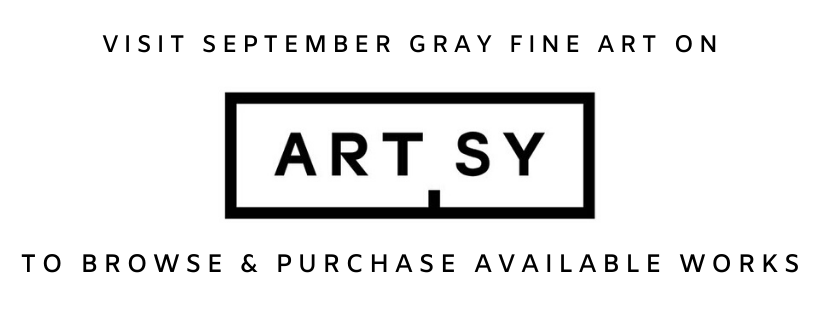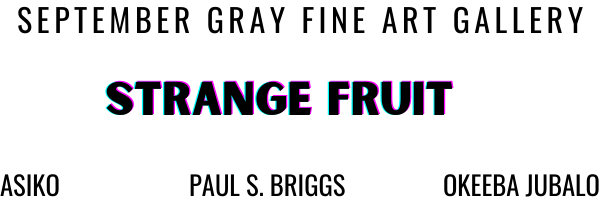
Start the Guided Tour, and then use the arrows on your keyboard and on the screen to navigate in the gallery.
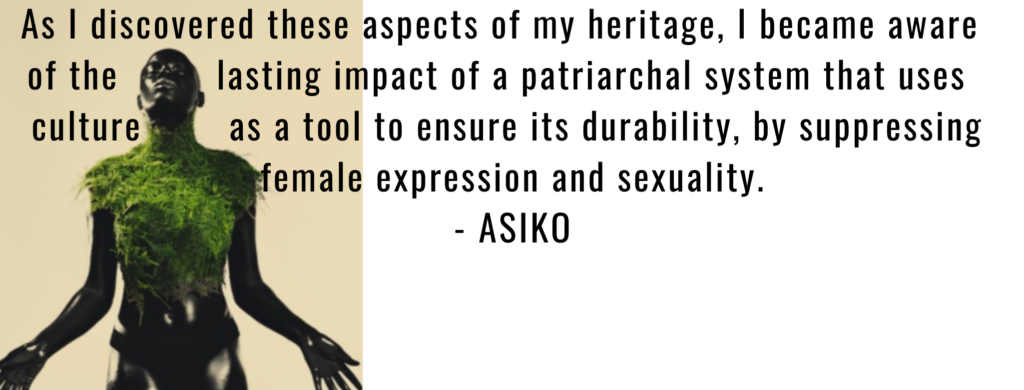
Àsìkò is a conceptual photographer whose practice is anchored by the interpolation of his emotional experiences as a Nigerian born (and raised) British citizen, into a life-long, cultural and spiritual exploration of his Yoruba heritage. His work is motivated by a drive for greater self-awareness, authentic creative expression and therefore the development of a visual language that articulates new ways to understand the liberatory possibilities of African diasporic identity.
As such Asiko’s work is aspirational. His images, although initiated by internal dialogue, seek to instigate public conversations with the audience that can help to negotiate some of the ethical contradictions inherent within modern permutations of Yoruba culture. This is because they are grounded in a wider commitment to faithfully honour and enrich the relevance of this vast and – as yet poorly understood – knowledge system and philosophy to contemporary global society.
He achieves this by employing an intrinsically sensual and feminist approach that centres the body as the subject through which he generates ideas about gendered power dynamics and violence, the limits of femininity and masculinity, spirituality and beauty, our relationship to nature and ultimately belonging. Frequently lacing his visual aesthetic with adornment and choreographed movement, juxtaposed against atmospheric locations, his imagery is imbued with a distinctively seductive charge.
Conversations – 2018
In 2016 a work colleague told me her story of female genitalia mutilation and how the cultural practice created a lasting psychological and physical impact on her life. In her story she detailed how she was cut at the age of 14 and how most women of her age from Somalia are cut as a normal occurrence. I started my research and exploration into an aspect of African culture I was unaware of.
This led to creating the work ‘Conversations,’ which is a set of conceptual images about violence against women and its intersection with African culture. As I discovered these aspects of my heritage, I became aware of the lasting impact of a patriarchal system that uses culture as a tool to ensure its durability, by suppressing female expression and sexuality.
I use plants and flowers as organic expressions of culture, representing beauty and fragility, as well as decay and destructive power, likened to the role of culture in male dominated societies. These images are symbolic representations of the physical and psychological effects of these violent practices of female genitalia mutilation, breast ironing, child marriage, sex slavery. The work was completed in 2018.
The Woman Code – 2018
In the Woman Code I delve into the symbolic meanings and design of Adire textiles; which are resist-dyed fabrics made up of complex symbols and patterns that convey specific meanings. The artwork encodes messages and proverbs which were used to communicate information and influence the unfolding of events.
During the history of Adire, women were not allowed to speak and express their opinions in public by the ruling class of men in the society. Adire symbols on fabric were used as a communication and expression mechanism among the Yoruba women of south-western Nigeria to overcome these barriers of patriarchy. In the work I strip away the symbols off the fabric onto female form highlighting its truest meaning and origin. It is an allegory of the woman wearing and expressing her subjugated voice and beliefs; it’s a symbolic expression of her true self and the wider community and language of women.
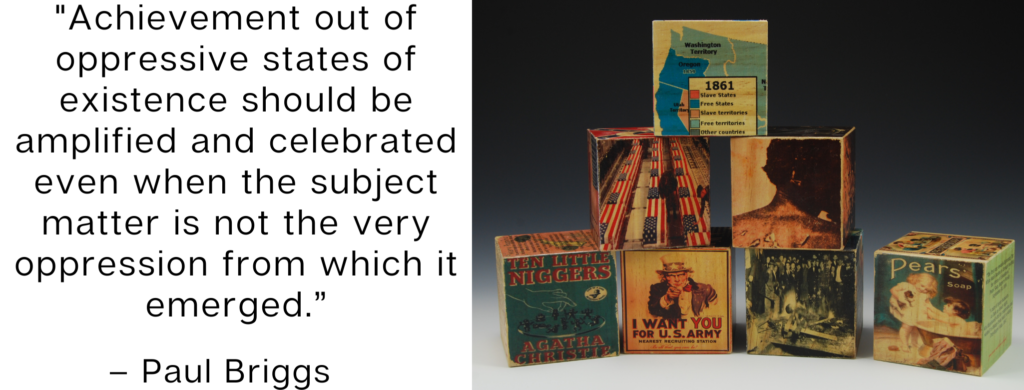
PAUL was born in Beacon, NY and grew up in the Hudson Valley region of upstate New York. “Slab-building is my “primary” method of expression. Pinch-forming is what I do to meditate, slab building is what I do to think through ideas, to philosophize concretely. I have studied educational theory and policy, art education, theology, sculpture and ceramics. After a circuitous and fortuitous journey, I am an artist-teacher at The Massachusetts College of Art and Design, Boston, MA. My partner and I share the evenings musing about sewing and quilting, ceramics and sculpture, art, life, and how far away our three children live.”
Working with issues related to suffering and inner pain is not my preferred subject matter. My usual practice has been to work meditatively and or to make work about my philosophical musings concerning spirituality. But for the last few years my usual practice has been disturbed by the social conditions that have developed around, the world waking up from history. The first group of 20 or so Personae were made at the beginning of my realization that who I am was being thwarted by my social context. The persona that I projected was not my usual easy-going self and my ways of being in the world became dominated by fear. This manifested as boxes that were made to confront the viewer at eye level from the wall and concealed much of the process which can only be seen by peering through nontraditional gender-symbol openings. The inner workings of the pieces were more or less available depending on how much of the construction fell on the outside and how much remained on the inside of the vessel-like form. Formerly the work brought me to the ideas of Gaston Bachelard in his book, Poetics of Space, in the section, The Dialectics of Outside and Inside. The work dramatizes inside and outside on a continuum that cannot be defined physically or metaphorically. I focused more on Karl Jung’s descriptions of personalities that were neurotic or leaning toward the neurotic, disintegrated, imploded or in some way compromised in the balance of conscious and subconscious.
The next group of work derived from this theme were the Cell Personae. I received a grant to fund the project titled, The Impact of Mass Incarceration of Black Lives. While by and large the first grouping personae were up against the usual struggle of being whole in society, the Cell Personae are about the lasting effect of incarceration on families, individuals and communities. Once one is labeled a felon, whether you are inside or outside of the cell, life is lived in the prison industrial system for one’s persona is perceived as a cell persona. And this is true as a stigma in our society, on job applications and in one’s ability to generally participate in democracy is curtailed and in most states one can no longer cast a vote. My goal was to make 25 of these pieces following the information of Pres. Obama made popular when he said “So let’s look at the statistics, the United Sates is home to 5% of the world’s population, but 25% of the world’s prisoners. Think about that.” We have also come to know through the research of Michelle Alexander in her book, The New Jim Crow, and through the film 13TH directed by Ava Duvernay, 40% of incarcerated persons in the United States are black with another 19% being Hispanic, while Blacks and Hispanics make up 13 and 16% of the US population respectively. I will complete 3 sets of 25 or more Cells. Mass incarceration in the United States is a crisis for people of color and it is a crippling epidemic and a system of social control. Formally, in this work the relationship between inside and outside became conflated due to the unrelenting impact and reach of incarceration into the lives of American citizens.
The present work deals with suffering and strength by refuting a vessel using some of the same visual language developed for the Cell Personae. But these pieces are more universal in not referencing any specific population. I return to answering questions about how one copes in the face of failing institutions, traditions and social systems. I am amazed at the strength ordinary people can exhibit and how they persevere and even thrive though facing great social, economic and relational obstacles. This work is neither gendered nor is just about race, it does not respect person. Formally, it is using metaphor and metonymy. To be doubled up inside, tied in knots, feeling tight all over, is how many describe the everyday tension of existence in a society seized by pandemic and strivings to wake up from history and create a more just and loving society, the beloved community. The wounded, broken, pierced and knotted pieces have a presence of dignity and a certitude. The ability to be is not canceled but only refuted.
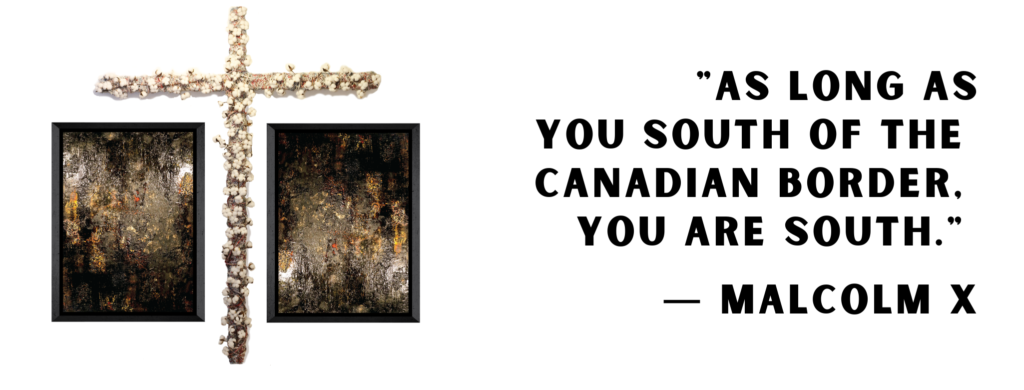
OKEEBA is an American painter based in Atlanta, Georgia whose creations are centered on illuminating the undefined and sometimes bitter truths of people of African American descent. He uses sketchy, yet vibrant and soulfully layered paint strokes with his original hand-written poetry. His infiltration of aged photos has become a prominent characteristic of his work. His strong, in-your-face artistry invokes conversations that are seldom discussed in large social arenas.
Jubalo has taken it upon himself to create a visual voice for those made invisible in America’s social, economic and political infrastructure. He draws his inspiration from his share cropping forefathers and experience. His artwork is a reflection of his vision of his perspective on the struggle of today’s African American.
Religious, social and political subject matter drive the message of his artistry. His artistic technique draws the audience into a visual history lesson that speaks to today’s social landscape.
Jubalo will continue to address some of the major concerns, issues and circumstances faced by African Americans from a socioeconomic standpoint. By addressing the past, he hopes that conversations invoked by his artwork will lead to global positive actions, and educating African American youth about sacrifices made by his and her ancestors.
Where am I? I am where I have always been, standing at the center of our truth as Black people in America. As an artist, the truth is my medium of choice and excellence is my discipline. These are complicated and simple times wrapped in America’s patriotic barbed wire. Either we are free or we are not free, it is just that simple.
America’s system of white supremacy penetrates and dominates every market. The Arts are no different than Corporate America or any other establishment in ‘our’ country. The American way is to deny my existence unless it is convenient and profitable to the power structure. I use the word ‘our’ in a somewhat sarcastic way as I think about the ongoing issues Blacks face on a day to day basis in America. Is my grade of the truth really allowed, encouraged and supported within the Arts or is it something that sounds good, until it makes the gatekeepers uncomfortable with my honest narrative?
My current body of work serves as the gateway for understanding where I am going as an artist who is unapologetic about living and creating within my now. Our entire system has proven to be unreliable and dishonest at best. I trust my work. I trust my hands. I trust my mind.
This is complicated. Our relationships with ropes, tree limbs, cotton, tar, fire and America are very challenging to say the least. The materials used to create this body of work speaks to some of our current and past experiences with lynchings. Ropes. Tree limbs. Cotton. Tar. Fire. Strange fruit, Black bodies swinging in the Southern breeze.
To the common eye my work and words may seem to speak to the destruction of Black America. That is to the common eye. Actually my work and words speaks to the strength, determination and focus of Black America. In spite of everything we faced and still face, we are still here. I am here. Where I have always been, standing at the center of our truth as Black people in America. As an artist, the truth is my medium of choice and excellence is my discipline.
